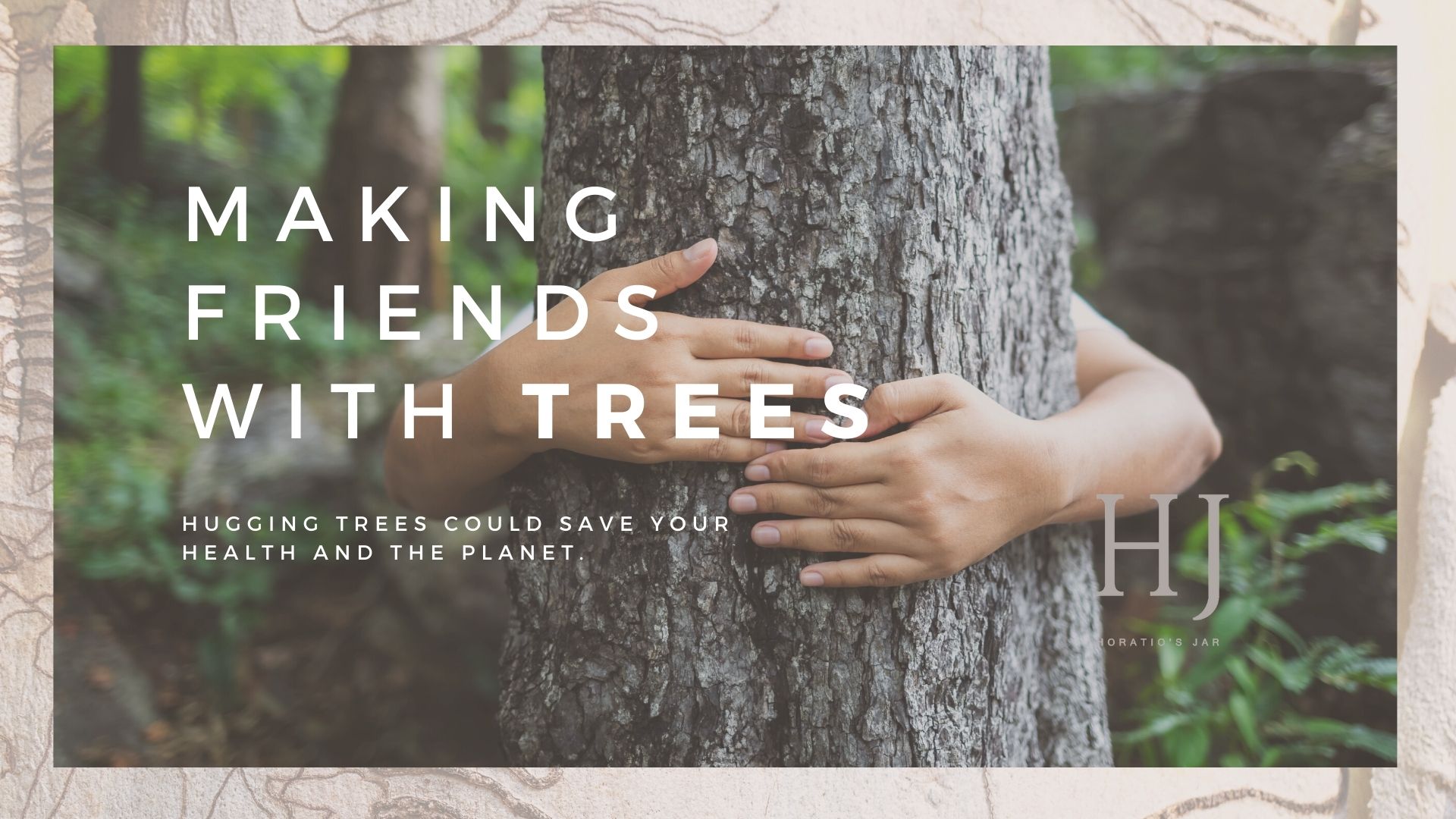Published by: Digital Schools
Making Friends With Trees
Our brains and bodies talk to trees through energetic and chemical pathways established millions of years ago. Humans came from the forest. We are primates, relatives of great apes, and, once upon a time; we lived in trees.
When we spend enough time with trees, the ancient connection to them and the earth ignites inside us. Our bodies and brains are receptive to the elemental, chemical and energetic fields circulating throughout the living world.
All our physiological systems are engaged. And when we stand with trees and begin to breathe, our body and brain heal themselves.
![]()
Nature Bathing
In the process of ‘ nature bathing’, or Shinrin – Yoku, humans can bond to trees when we breathe, and it’s more than the air we share that unites us.
Trees release particular chemical messages into the atmosphere to help them fight diseases. These natural chemical compounds, plant oils and aerosols are also helpful to humans.
The antiviral and antifungal compounds plants release through their leaves and bark trigger our immune system to create special Killer Cells. KC cells kill viruses and tumours and boost our immunity.
– Dr Qing Li, ‘Into The Forest’
![]()
Resources and Links
‘Into the Forest’
How Trees Can Help You Find Health and Happiness
(Author: Dr Qing Li, Associate Professor at the Nippon Medical School in Tokyo and President of the Japanese Society of Forest Therapy.)
https://www.penguin.co.uk/articles/2019/may/how-to-improve-your-health-by-forest-bathing-shinrin-yoku.html
![]()
Time To Make Friends With Trees
It’s time to do more than just spending time in nature, it is time to make friends.
Touching the trunk of a tree or even touching something made from wood lowers blood pressure and cortisol levels and balances our hormones. People are calmer, happier and live longer when around trees regularly. Humans who live in houses made from trees and work from desks made of timber are more productive in their work, feel more creative, less distracted, and sleep better.
Trees help us heal, grieve, and connect to nature; they are the gatekeepers to our elemental world.
Trees are social and emotional beings like we are. They have families, live in communities, communicate via a vast underground communication network, share information and grieve. There is much to be said about our relationship to nature and why we mistreat it. Everything is perception. How we perceive the world is how we live in it.
If trees were perceived as friends, family, relatives and mothers, we would undoubtedly do much more to hold onto them. I am sure.
![]()
Guest Contributor: Emily Rack
Business Name: Horatio’s Jar
Publisher: Digital Schools
Emily Rack is a freelance creative writer and researcher, visual content creator and designer. She is the head of the content production, publication and editing for Upschool+ Guest Contributors and Horatio’s Jar is her content production agency and wellbeing school.
Emily has dedicated her life to researching and understanding matters of the mind, body and the human experience. Her discoveries and research are focused on cultivating tools and dialogue that encourage us to live in peace and harmony here on earth.
Her current focus is the environment and human connectivity, conservation, environmentalism, plant medicine, botany, biology and the practice of ‘Nature Bathing’. Emily is a writer, digital content creator, seasoned photographer and visual artist.
——-
PUBLISHER’S DISCLAIMER: The publisher of this blog post (Digital Schools PTY LTD) works in partnership with the school as a 3rd party provider to help build and maintain the school website. Digital Schools sources a range of experts who provide products and/or services to educational institutions and we work with them to produce and publish topical information in the form of blog posts that we think may be relevant, interesting or topical to families within the community. The views, opinions and content listed in this blog post are that of the guest contributor and/or publisher (Digital Schools). It should be noted that whilst the publisher and guest contributors are acting with the best intentions and in the best interests of the school and their community to provide helpful or interesting information, sometimes the content may not necessarily reflect the views of the school.
The information in this blog post is not meant to be used, nor should it be used, to diagnose or treat any medical condition. For diagnosis or treatment of any medical problem, consult your own physician. The school and the publisher of this blog post are not responsible for any person reading or following the information in this article who may experience adverse effects.
Any references to external websites or sources are provided for informational purposes only and do not constitute an endorsement by the school or publisher in any way and the publisher and/or school cannot guarantee the accuracy of the information listed.
If you have feedback on any content on this platform, you can submit it to the publisher using the feedback link provided at the bottom of this page.


